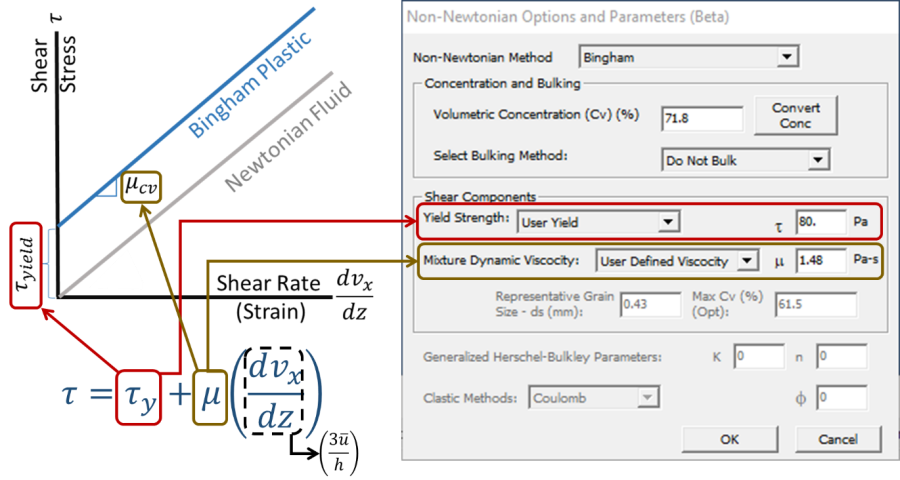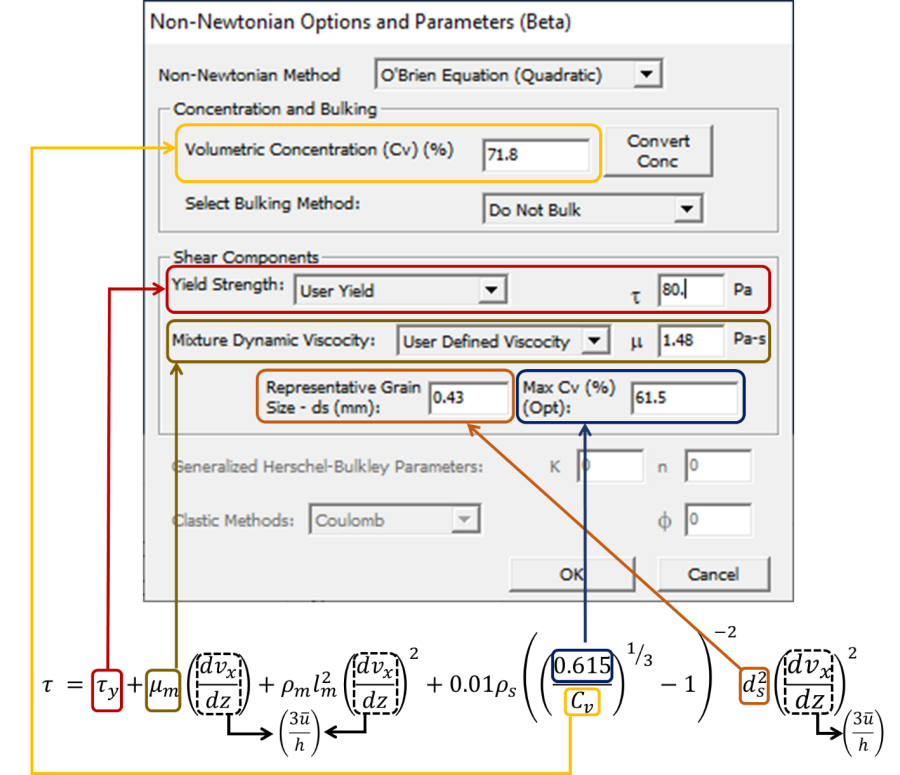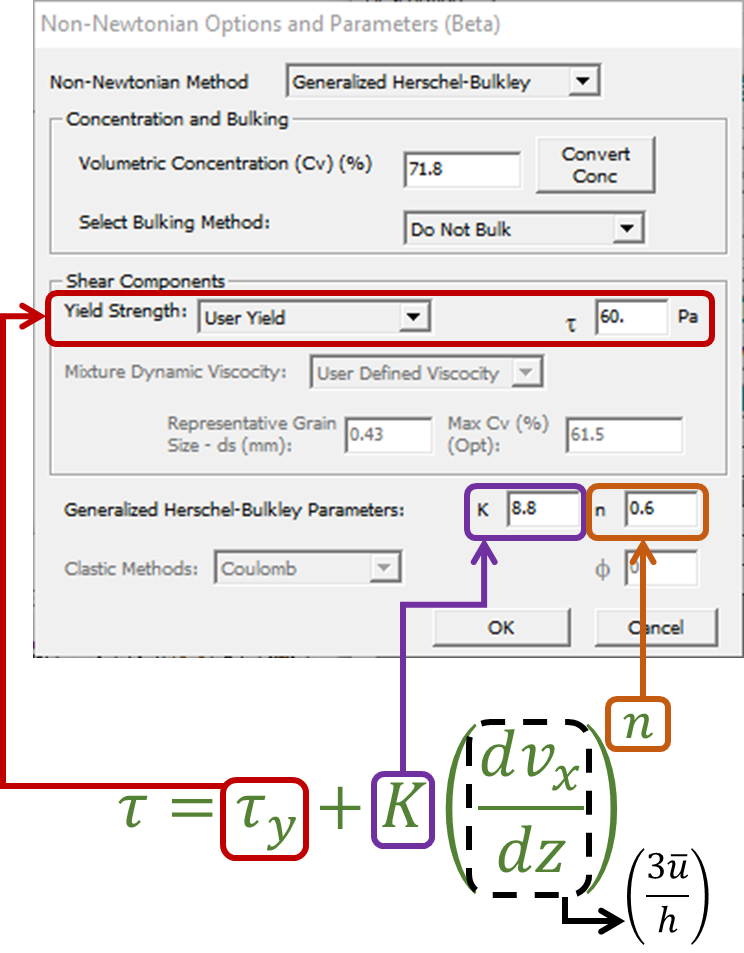Download PDF
Download page Non-Newtonian Methods.
Non-Newtonian Methods
The terms, variables, and parameters on the non-Newtonian editor change based on the method selected. Select the Non-Newtonian Method first to activate the appropriate fields and methods associated with that option. The default method is Newtonian Assumptions which means that HEC-RAS uses the standard "clear water" equations and does not apply any Non-Newtonian methods.
The current version of HEC-RAS includes five additional methods:
The first mud and debris method (Bulking Only) is not – actually -a Non-Newtonian method, because it only changes the volume of the fluid. The Bulking Only method does not depart from the Newtonian model or compute internal losses. The other five mud and debris flow methods are non-Newtonian approaches, computing internal losses from stress-strain models that do not have a zero intercept and/or are not linear.
The models and math behind these methods are described in detail in the Technical Reference Manual. This section will describe use and parameterization.
Bingham User Parameters
The Bingham equation is often applied to Hyperconcentrated flows and mud flows. In theory, these lower concentration flows fit the linear model better. However, its relatively simple formulation makes it easier to calibrate. Fewer free parameters make it less vulnerable to equifinality issues. So it has been applied successfully to higher-concentration debris flows in laboratory and field applications.
The Bingham model only requires two user inputs: the yield strength (the intercept of the stress-strain relationship) and the sediment laden viscosity (the slope of the stress-strain relationship). The options for these are described in the Yield and viscosity sections below.
O'Brien Equation (Quadratic) User Parameters
The O'Brien equation uses a quadratic model to add non-linear impacts of particle collision and turbulence to the linear yield and viscosity terms in the Bingham model. It is not as flexible as Herschel-Bulkley. The non-linear effects are always a function of the square of strain, so they are always strong shear-thickening effects. But the O'Brien model is easier to parameterize than Herschel-Bulkley. The O'Brien equation uses physical values to develop theoretical quadratic effects. The liability of this approach is that if the theoretical formulation does not reflect the processes in the geophysical flow, it will introduce errors. But the benefit of this physical-theoretical approach is that all of the inputs in the non-linear terms are physical parameters that are either default or relatively intuitive for the user to specify.
In addition to the yield stress Gibson et al. (2020 in revision) demonstrated that lower yield and viscosity values are often appropriate for the O'Brien approach when compared to Bingham because the O'Brien equation is explicitly accounting for processes in the quadratic term that Bingham is lumping into the linear parameters. and sediment laden viscosity that are required for the Bingham model, the O'Brien model only requires the volumetric concentration (which is already required for bulking and for some yield and viscosity estimates) and a representative grain size. HEC-RAS has also exposed the default maximum volumetric concentration in O'Brien's Bagnold term (0.615 or 61.5%). This term is ok for lower concentration flows (Cv<50%). But as concentration approaches or exceeds this theoretical maximum (see discussion associated with this input below) users should increase it to make it larger than the volumetric concentration.
We implemented the version of this equation in Julien (2001) and interviewed Dr. Pierre Julien about the terms of this equation in the video below (full audio interview here).
Herschel-Bulkley User Parameters
Hershel-Bulkley is a flexible, relatively simple, but highly empirical approach. It allows a wide range of non-linear rheological approaches with a fairly simple formulation. However, estimating these terms can be very difficult outside of a laboratory (see discussion of these terms below).
Like Bingham and the O'Brien quadratic models, Hershel Bulkley has a yield stress. This yield stress has the same units and methods as the other models so it is specified in the same Shear Components location as the other models. However, the coefficient in front of the strain is no longer a simple Mixture Dynamic Viscosity. Because Herschel-Bulkley raises the strain to a power, the units of the coefficient diverge from the simple viscosity units for any power other than 1. Therefore, if n≠1, K is not a physical viscosity, but just an empirical coefficient of the power function. It is not appropriate to use the viscosity equations for this coefficient. Therefore if users select the Generalized Herschel-Bulkley method the Mixture Dynamic Viscosity options become unavailable, and the Herschel-Bulkely terms become active.